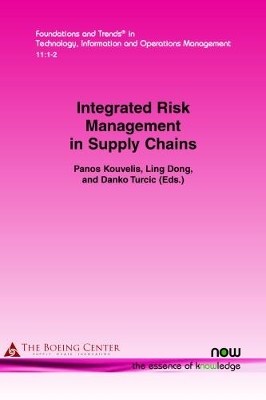Integrated Risk Management in Supply Chains examines supply chain risk management. The increased interest in the topic is due to a number of factors including the increased volatility of commodity prices and exchange rates, recent natural disasters, and the increased importance of multinational corporations. The motivation for risk management comes from a variety of sources: financial distress costs, managerial incentives, and other important reasons discussed in the remainder of this book. Understanding the motives is important because they provide insights into which risks should be managed and how a firm's risk management operations should be organized. The first part examines Buffering Supply Chain Risk with Operational Flexibility and deals with uncertainty in the form of routine variability, which includes fluctuations in demand. Part 2 reviews Supply Disruption. Both the preponderance of natural disasters and huge economic swings can cause extreme challenges across the supply chains. Although these types of risks are rare, they are highly consequential and buffering is insufficient to mitigate them. Instead, firms facing these risks must engage in contingency planning and must maintain redundancies in the system. This is why contingency planning is on the interface of operations and finance. Part 3 looks at Commodity Price Risks, which includes five papers on managing price risks – the first three papers are fundamental in that they ask when and how firms should manage price risks with hedging and how hedging affects operating policy and the remaining two papers examine the best practices in specific industries.
- ISBN13 9781680833782
- Publish Date 21 December 2017
- Publish Status Active
- Publish Country US
- Imprint now publishers Inc
- Format Paperback
- Pages 230
- Language English
- URL https://nowpublishers.com/article/Details/TOMV11-N1-2
